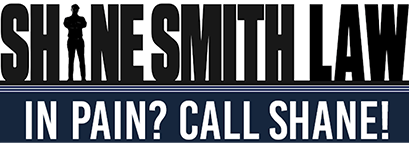Evidence in insurance claims can include a variety of information and documentation such as a police report, statements from witnesses or even a traffic camera. Evidence that establishes which party was negligent can be very helpful in building a strong case.
To learn if you have a viable claim, seek legal counsel as soon as possible. An accident attorney can also explain the options that you may have available following an accident in Peachtree City.
Traffic Cameras as Evidence in Insurance Claims
Used for issuing citations, and in some cases gauging traffic or weather conditions, cameras can sometimes show traffic violations that cause or contribute to the collision. For instance, it might show the other driver’s failure to yield, making an unsafe lane change or running a red light. At the same time, it could also provide evidence that you weren’t negligent, such as showing that you stopped at a light.
Some are installed at intersections and others overlooking busy stretches of highway. An example in Peachtree City is the traffic camera found on I-75 North of Tara Boulevard.
Most of these cameras specifically enforce violations pertaining to motorists who run red lights. In Georgia, tickets for this offense are issued to the registered owner of the vehicle captured on camera.
Pictures are taken of the:
- light;
- Intersection; and
- license tag.
Penalties for these citations may result in a maximum $70 fine. It generally doesn’t impact the driver’s insurance. However, used as evidence in insurance claims, the video footage could be extremely helpful to the case.
Other Types of Evidence in Insurance Claims
Other types of evidence may be combined with traffic cameras when filing a claim. For instance, if the other driver ran a red light and you believe he or she was intoxicated, the traffic camera showing the traffic violation and sobriety tests demonstrating intoxication can help establish the driver’s fault.
Other examples of evidence in insurance claims include:
- the accident report;
- statements from witnesses; and
- photographs taken by others who are at or near the scene of the crash.
The accident report may include a diagram of the scene, which could help in establishing fault. The officer who responded to the accident may even note that a traffic citation was issued, which can also help establish negligence. It may contain other information that can prove useful in establishing what led to the accident and who is at fault.
Witnesses who saw what happened can be invaluable. They may be able to help corroborate your own statement as to what caused the accident. Taking pictures of the damaged vehicles, up close and at a distance, can sometimes show more than a traffic camera. You may also wish to get some shots of the road conditions, signs or other objects that may help in establishing what happened.
Consulting with a Peachtree City Accident Attorney
According to the National Highway Traffic Safety Administration (NHTSA), in 2008 there were a total of 1,134,000 crashes at an intersection. The majority of these occurred where there were traffic signals (512,000). It’s hard to say how many might have been able to use traffic cameras as evidence, but if footage was available demonstrating the cause, it may have proved valuable.
If you were in an accident at an intersection or another location where a camera was able to catch what happened, it could prove helpful to your case as well. Call (980) 246-2656 to set up a consultation with an accident attorney at Shane Smith Law. We will carefully evaluate your case and explain the importance of this and other types of evidence in insurance claims.

